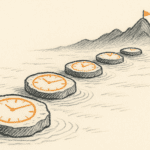Sony’s insular culture just didn’t see it coming
“…Sony, which once defined Japan’s technological prowess,
wowed the world with the Walkman and the Trinitron TV and shocked
Hollywood with bold acquisitions like Columbia Pictures, is now in the
fight of its life.
In fact, it is in a fight for its life – a development that exemplifies
the stunning decline of Japan’s industrialized economy. Once upon a time,
Japan Inc., not to mention Sony itself, seemed invulnerable. Today, Sony
and many other Japanese manufacturers are pressed on all sides: by rising
Asian rivals, a punishingly strong Japanese yen and, in Sony’s case, an
astonishing lack of ideas.”
HIROKO TABUCHI New York Times (15 April 2012)
So what happened to Sony? Just the other day it was an iconic Japanese firm, one whose brand stood for innovation and product quality. Now, as Hiroko Tabuchi tells us in a recent issue of the NYT, it is widely thought to be in a fight for its life.
This, don’t forget, is the company that gave us the Walkman and the Discman, the Trinitron TV, the Playstation and many other hit products. It was the firm that raided corporate America and bought out Columbia Pictures. Just a few years ago, Sony products sold for a premium compared to rivals, and were to be found in many of the world’s better-off households.
This is the firm that is now declaring a $6-billion-plus annual loss; that has failed to make a profit since 2008; and whose share price hit a quarter-century low last week. Sony’s market value is now one-ninth that of Samsung Electronics, and just one-thirtieth of Apple’s – both companies it dominated in years past.
How exactly do you go from so good to so bad?
Ms Tabuchi tells us that this is “the story of a proud company that was unwilling or unable to adapt to realities of the global marketplace. Sony’s gravest mistake was that it failed to ride some of the biggest waves of technological innovation in recent decades: digitalization, a shift toward software and the importance of the Internet.”
This rings true. The company has not had a leading-edge hit product for longer than I can remember. Its Bravia televisions were the last market-leaders Sony has fielded; but those have faded badly against the onslaught of the ever-improving Samsung and LG sets. Walkmans were eclipsed by Apple’s iPods; video-game players failed to keep up with Microsoft’s Kinect and others.
Insiders reveal an astonishing tale of rigid product silos within Sony, resolutely refusing to co-operate and create products that spanned divisions. Meanwhile, the rest of the world did just that, designing music players that also showed videos; phones that took pictures and browsed the internet; cameras that connected with online photo galleries.
In other words, the focus of consumer electronics shifted from the quality of the product to the quality of the user experience, marrying software and hardware to create exciting, multidimensional new products like the Apple iPhone and iPad and the Samsung Galaxy. Sony, too consumed by internal divisions and too proud of its past, simply never saw it coming.
Sony could still be turned around, and I hope it is. But it will take much pain and re-imagination.
This could happen to your company. It is a curse to become too successful, a curse that takes years to manifest itself. It takes the form of hubris, insularity and complacency. When the curse does become clear to all, it is often too late to do anything about it.
The lesson for business leaders is to be very, very careful about premature celebrations. Do not let a sense of superiority creep in; do not allow people to take their eye off the industry and the market; do not imagine you have all the technology worth having; don’t think you’re the best you can be. A little paranoia, even in the face of heady success, is no bad thing for a leader to have.

Buy Sunny Bindra's new book
The X in CX
here »
Popular Posts
- You are who you hang out withSeptember 28, 2025
- Why your mother was right about your anxietyOctober 12, 2025
- The balance sheet that mattersOctober 5, 2025
- Use AI, but don’t lose youOctober 19, 2025
- Born knowing the waySeptember 21, 2025















